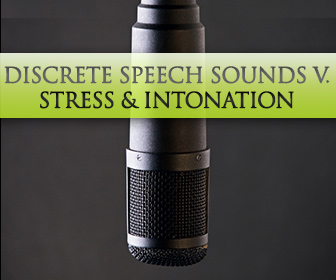Which is More Important? Discrete Speech Sounds v. Stress and Intonation


This is especially true of ESL Advanced pronunciation classes, whose students often already have speech that is quite comprehensible if not native-like. However, there is still a lot to do in the Advanced ESL pronunciation class to help students continue to refine their skills and avoid “ennui.”

Targeting individual need is especially necessary for the advanced student because their overall English skills are strong enough that they just have a few specific areas for continued development. Assessing student skill through taped conversations and reading aloud or giving a short impromptu speech will give the instructor an idea of both individual student need as well as the needs of the class as a whole.
While many ESL advanced speakers have few if any problems with individual speech sounds, sounding native-like in this regard, most ESL students will need work on the suprasegmentals, the pronunciation across word and sentence boundaries, the issues of stressing key words, reducing structural words, and when and how to pitch the voice. It is so almost universally true of ESL students, the need for working on stress and intonation: in fact, that I would suggest an ESL student who doesn’t have such concerns is really at native speaker proficiency in English and doesn’t need ESL pronunciation skills classes, at least. Planning to spend a significant amount of class time on the suprasegmentals--word stress, sentence stress, and question intonation, for example--is a very concrete way to serve the ESL student in advanced pronunciation.
Most ESL students, even at the advanced level, will continue to have concerns with pronouncing individual speech sounds. Refer back to the assessment exam and determine if there are a few common areas to focus on that all or most of the class will benefit from: the pronunciation of the “th” sound as in “thigh,” for example, or distinguishing “b” and “v.” Some short exercises to work on these specific sounds taught throughout the class can also be helpful for students.
Most students at this level will be concerned about the language and pronunciation for the workplace. Therefore, teach simulation job interviews, business meetings, and presentations as a context in which to also practice pronunciation. Job interviews, for example, are an obvious place to practice question intonation. The instructor might also introduce some of the vocabulary endemic to the workforce in general (“automatic deposit,” “paystub,” “ink cartridge,” “conference room,” and “cubicle,” etc.), using the opportunity to also focus on word stress and individual speech sounds.
Find out students’ majors, and introduce the vocabulary related to those majors: e.g., “foreshadowing,” “character analysis,” “imagery,” “alliteration,” and “assonance” are all relevant to the English major. These are also good words for teaching pronunciation, such as the word stress typical of academic vocabulary, the morphemes or word parts, and their pronunciation. Most academic words are multisyllabic with word parts with specific meanings and pronunciation. For example, the word “analysis” is used throughout academic courses, and has related forms, such as “analyze.” Teaching students how the stress and pronunciation shifts according to the word form--in this case, the stress shifting from the second to the first syllable when moving from noun to verb form--is helpful for students to develop their academic vocabularies.
In literature classes, we often hold discussions analyzing characters and plots, for example; history classes will typically analyze a specific historic event, such as the Great Depression, and its causes and effects. While teaching the structure of such discussions, the instructor can also teach the suprasegmentals of an academic conversation—sentence stress, question intonation, and so forth. An academic discussion, for example, often begins with an “informational” or “open-ended” question (that is, a question that may be answered in a variety of ways and may not just be answered “yes” or “no”), such as “What were some of the causes of the Great Depression?” Therefore, this could be the place to teach intonation of information questions.
At this level, students are prepared to give feedback to their peers on areas for improvement. A regular activity can be for students to give short presentations and for their peers to respond with their feedback on areas for improvement: where they had some trouble understanding, for example, or places where intonation or stress seemed awkward or unnatural.
Regular instructor assessment, both formal and informal, is important to students. Language students are tend to be motivated by frequent short quizzes on small units of instruction, which are not so big as to cause major test anxiety and frequent enough that students are able to see their own progress. More informal daily feedback is also important, the kind of “assessment by walking around” that involves the instructor checking in with groups or pairs practicing an instructional point and offering feedback for improvement.
Students can also do some self-assessment at this level: reflection on areas for desired improvement, what aspects of their speech and pronunciation they are satisfied with and areas they feel need development. They can also plan and complete activities for improving their own pronunciation, much as a musician or athlete might plan her own practice, by charting plans for focusing on specific areas of pronunciation for ten or fifteen minutes a day, for example.
Because of the nature of advanced ESL classes--the students have mastered a number of language skills--it can be difficult to determine needs for instruction. This is especially true of ESL pronunciation classes as native-like pronunciation from ESL students is rarely required and some difference from native speech, some “accent” is acceptable and expected. However, through careful assessment and planning, the Advanced ESL pronunciation instructor can develop a meaningful curriculum that will keep students motivated and improving their English.